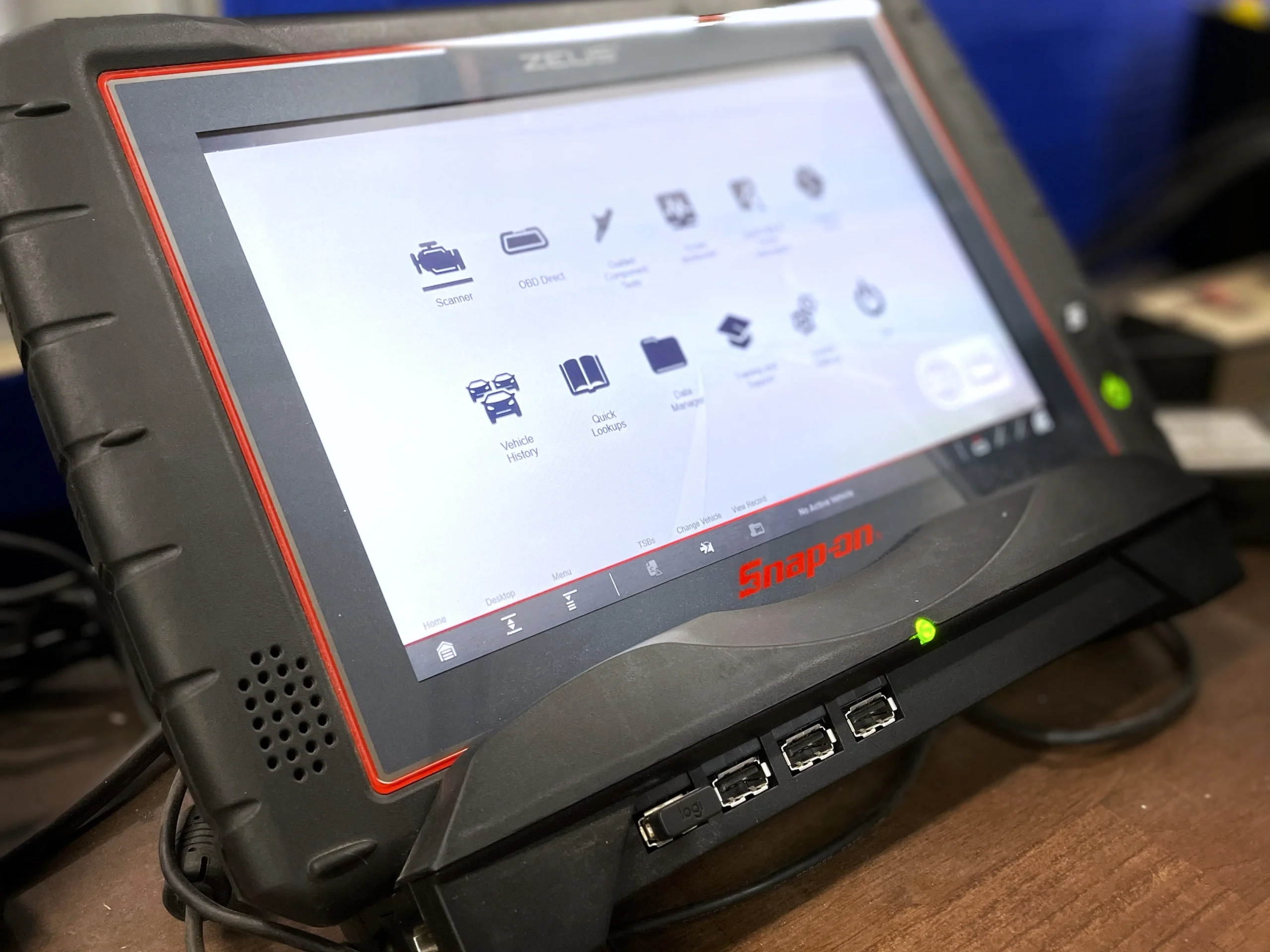Vehicle Diagnostic Testing
As an industry, we’ve done a bad job of showing our clients just what we do when we diagnose their vehicle. A disappointingly large number of motorists still believe we hook up some kind of magical computer that just tells us what’s wrong with their car.
That “computer” they’re thinking of a is a scan tool, which is an interface that we use to communicate with the various on-board computers inside your vehicle. Using the scan tool, a well-trained technician can gather information that helps in arriving at a diagnosis. However, this information is only a starting point, and the human brain takes over a lot earlier in the diagnostic process than most people realize. Completing the diagnosis usually requires access to:
- Thousands of dollars' worth of other testing and diagnostic equipment.
- Hundreds of pages of service information, diagrams and specifications.
- A skilled technician to make sense of it all.
Luckily, we’ll rent you all three of those items for a very fair price! Below are some points where we’ll break down some specific reasons why customers should want diagnostics performed on their vehicles.
- Professional expertise: Automotive diagnostics requires specialized knowledge, tools, and training. Automotive technicians have invested time and resources to acquire the necessary skills to diagnose complex issues accurately. Just like any other professional service, customers should compensate them for their expertise.
- Time and effort: Diagnosing automotive problems can be a time-consuming process, especially when dealing with intricate electronic systems. Technicians need to invest their time and effort in meticulously inspecting and testing various components to identify the root cause of the issue.
- Equipment and tools: Automotive diagnostics often involves the use of advanced diagnostic equipment and tools. These tools can be expensive to acquire and maintain, and customers are essentially paying for access to these resources when they pay for diagnostics.
- Preventative maintenance: Identifying and addressing automotive issues early can prevent more severe and costly problems down the road. Paying for diagnostics can lead to the early detection of potential issues, saving customers money on major repairs in the long run.
- Transparent pricing: Charging for automotive diagnostics allows for a transparent pricing structure. Customers can be informed upfront about the cost of diagnostics, and this fee is separate from any potential repair costs. It helps to avoid any surprises in the final bill and builds trust between the customer and the repair shop.
- Safety and reliability: Ensuring the safety and reliability of a vehicle is of utmost importance. Proper diagnostics can help identify safety-related issues, making it crucial to invest in this service to ensure the vehicle's performance and the safety of its occupants.
- Investment in the business: Automotive repair shops and service centers need revenue to cover their overhead costs, including technician salaries, equipment maintenance, and facility expenses. Charging for diagnostics helps sustain the business and continues providing quality services.
It's essential for customers to understand that paying for diagnostics is a standard practice in the automotive industry, and it supports the quality of service they receive, ultimately helping them maintain a well-functioning and safe vehicle.

